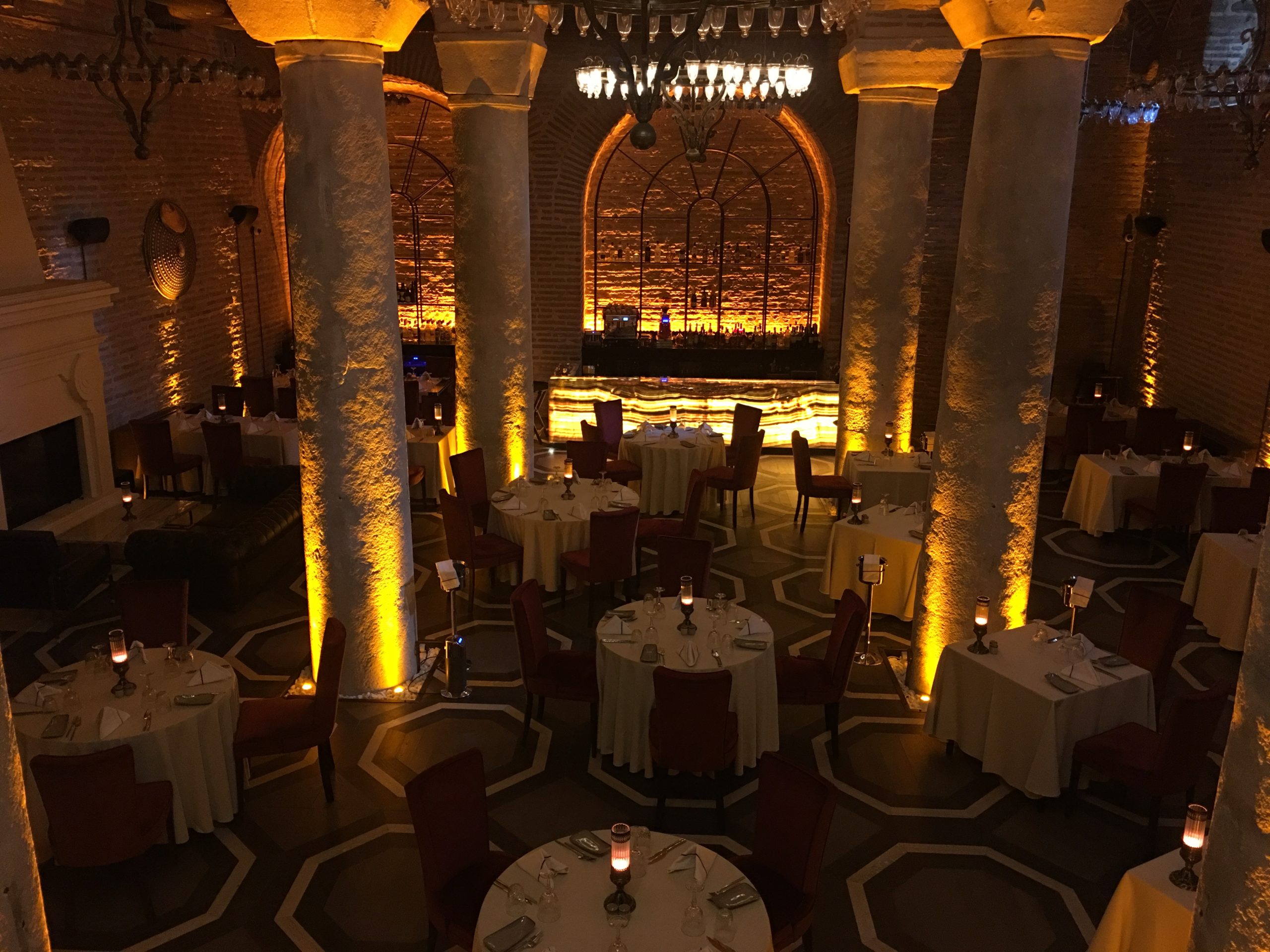Visitors coming to Istanbul may wonder whether restaurants in this city are all traditional in style. Especially those in the Old City peninsula, are more often lacking in ambiance even though they offer good quality Turkish food. If you are looking for atmosphere as much as quality, Istanbul offers you a wide range of places to go. However, not many of these are in the Old City.
In the last few decades, Istanbulites have become more and more keen on going out to eat. Any meal, including breakfast, can be an opportunity to go out with family or friends and being a big metropolitan city, İstanbul offers ample choices for any social class and taste. Furthermore, the selection is never confined to local cuisine. Mediterranean, Middle Eastern, Chinese, Greek, Russian, Indian, Thai and Mexican are examples of cuisines that are offered in restaurants ranging from rather informal cafes to more refined and upscale restaurants. If you are looking for a fine dining experience, you should be going to certain restaurants along the Bosphorus (on both coasts) and districts such as Beyoğlu/Taksim, Galata, Nişantaşı, Etiler, Ulus or Suadiye on the Asian side. Again, as always, my recommendation for you is to look for places that local people go to. Making a reservation would definitely be wise, especially during week-ends. It is becoming almost impossible to just walk into a restaurant without a prior reservation in Istanbul.
If you are staying in the Old City but do not want to go far for a nice evening out, there are two places that can be recommended. Both of them are in very interesting historical settings. The first of these is actually a come-back which I was very happy to rediscover. The second one is part of a most unusual place for a restaurant.
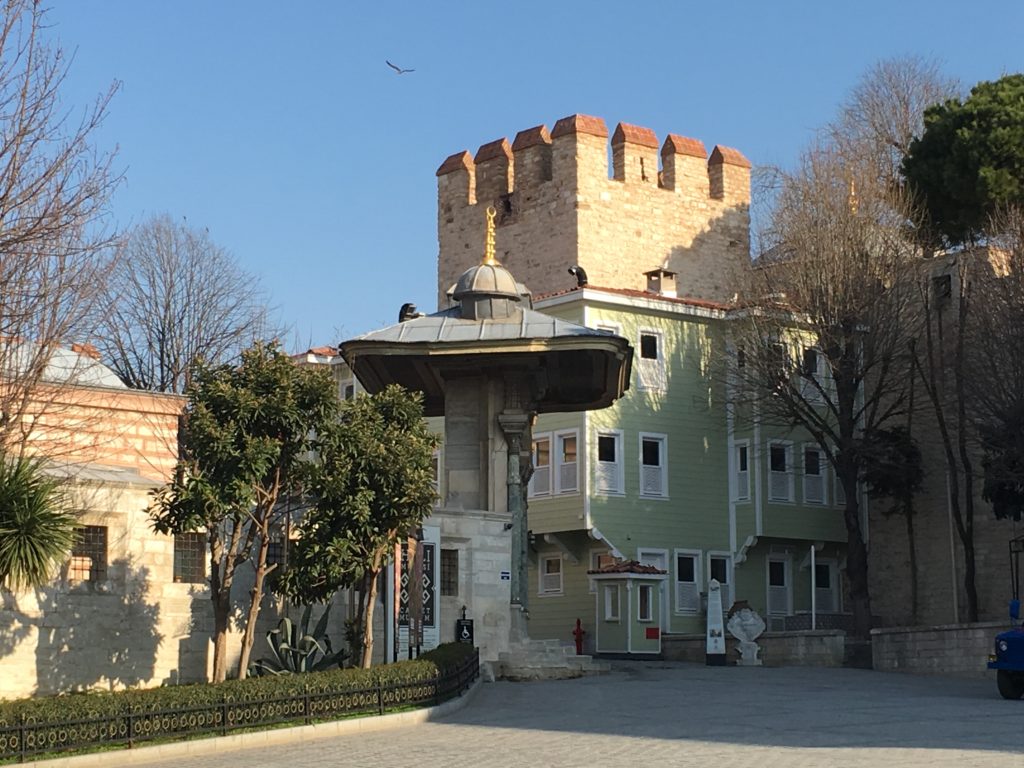
Sarnıç Restaurant is situated just outside the Topkapı Palace. (For more information about the palace and the renowned Harem section, you can read my post, Beyond the High Walls of the Harem…, by clicking the link) Facing the main entrance, on your left you will see a cobblestone street between the wall of the first courtyard of the palace and Hagia Sophia. This is a narrow street with a row of traditional wooden Turkish houses that rest against the palace walls. Some people jokingly like to call them slums of Ottoman times but, historians claim it could hardly be the case. They point out that, it would be impossible to build such houses without the permission of the Sultan. The name of the street is Soğukçeşme, which literally means Cold Fountain, referring to the fountain at the entrance to the street.
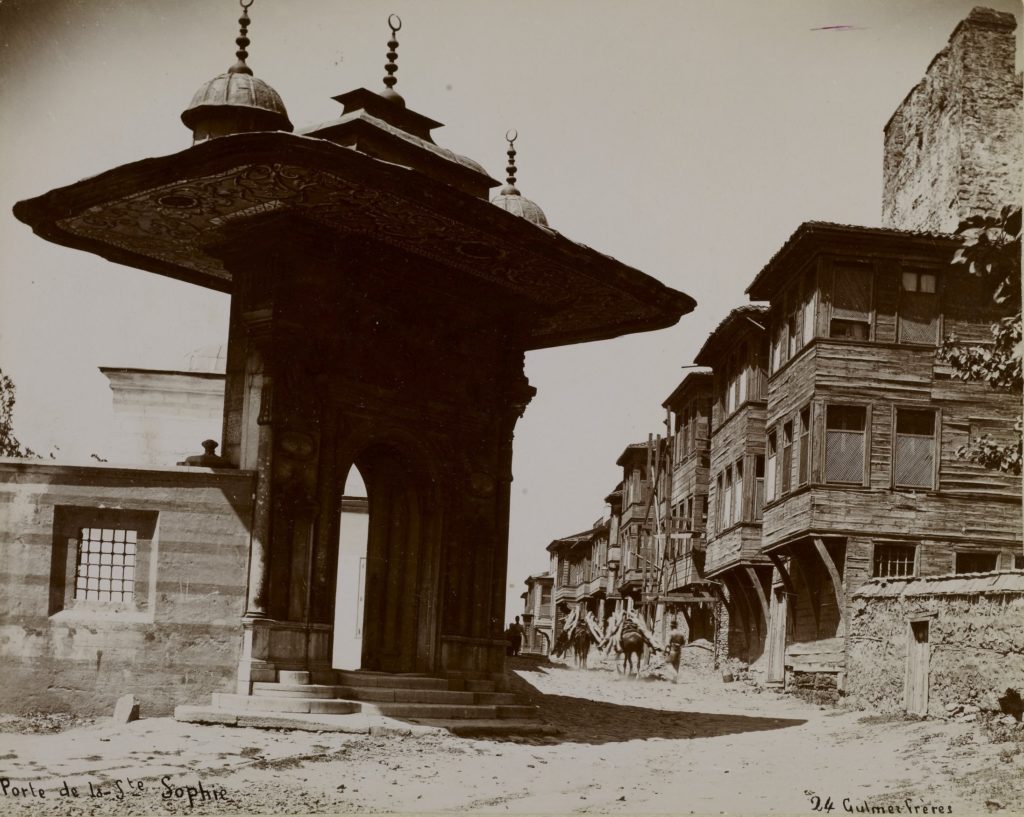
Source: eskiistanbul.net
Based on historical evidence, it is believed that the street first became inhabited in the 18th century. The fountain that gives the street its name is also dated as the year 1800. It is flanked by the wall of Hagia Sophia and the Topkapı Palace, forcing the houses on the right to be rather narrow in depth. Initially, it was the dwelling place for the civil servants who served at the palace. However, after the imperial family moved to palaces along the Bosphorus in the 19th century, the social texture of the street changed. In 1903, the sixth President of the Turkish Republic was born in one of the houses in this street.
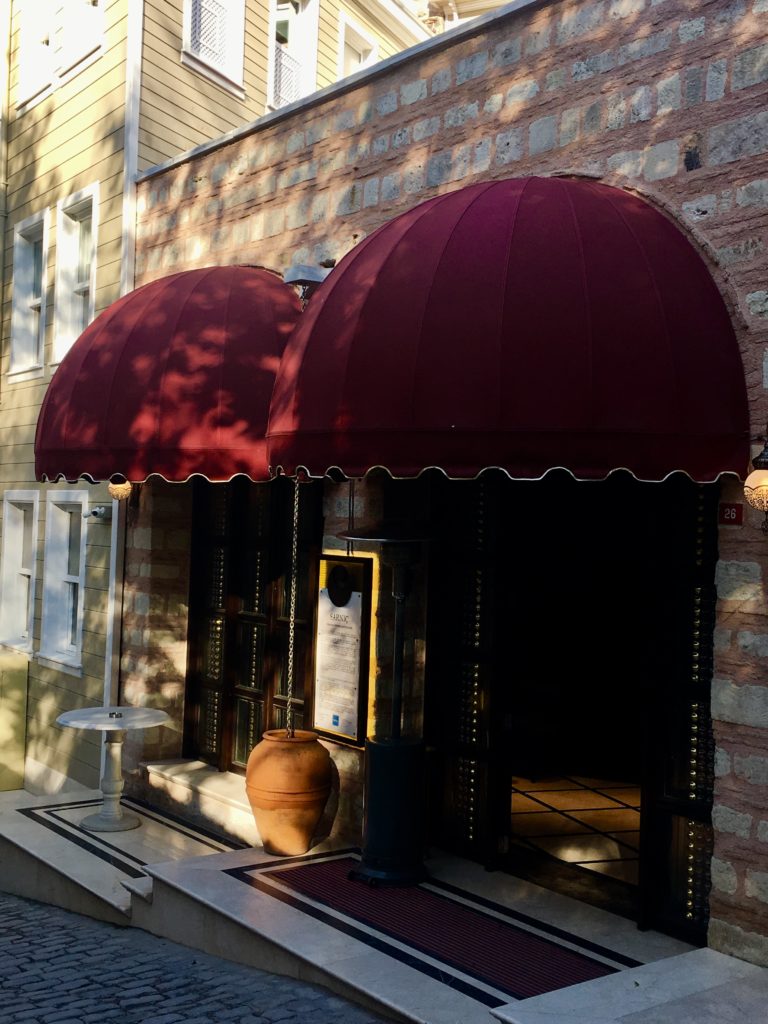
The main structures of the street are 12 houses and a cistern. The whole row of houses and the cistern were renovated in 1985-1986 with the efforts of the General Director of the Touring and Automobile Club of Turkey, Çelik Gülersoy (1930-2003). Mr. Gülersoy, who was a lawyer, poet and writer, is close to the heart of every Istanbulite who cares for the discovery and preservation of the treasures of Istanbul. His contributions to Istanbul’s historical texture are immense. His personal collection of documents, periodicals, photographs and etchings on Istanbul can be seen at the Çelik Gülersoy Foundation Istanbul Library which is also in the same street (Address: Soğukçeşme Sok. No: 24, Sultanahmet).
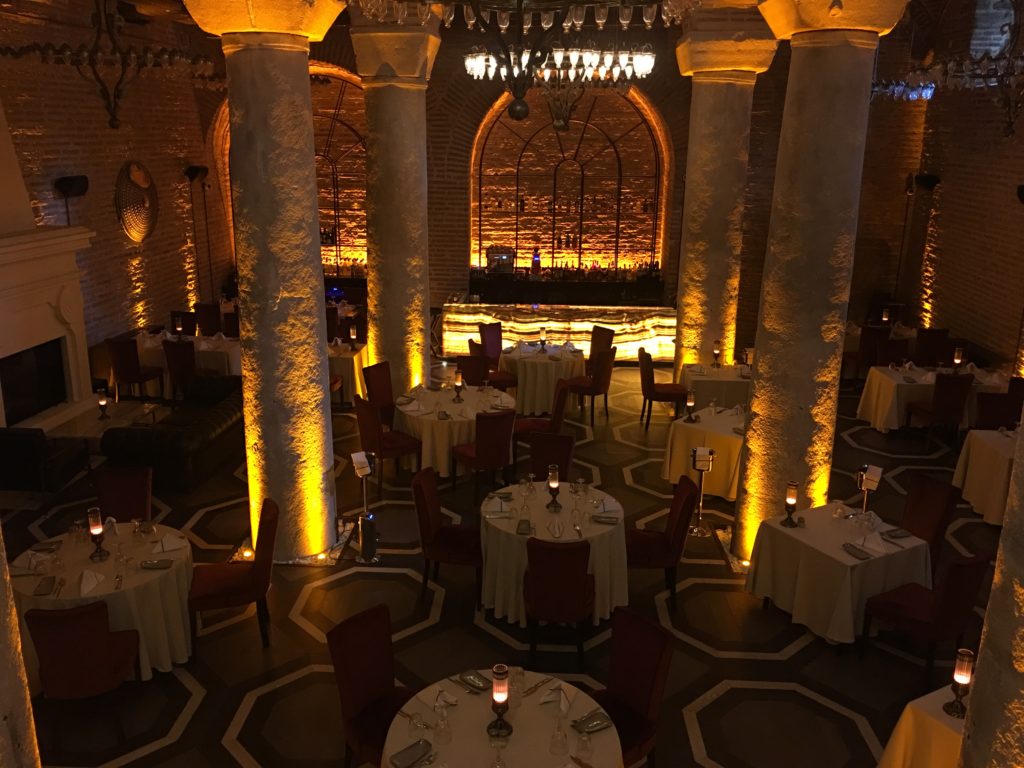
Before the renovation, Soğukçeşme Street was a dismal corner of the city that was totally in ruins. The cistern, which is at the end of the street (at the top of the slope that goes down to the Gülhane Park) was almost completely filled with soil and used as an auto repair shop. Currently, the houses are run as a boutique hotel under the name of Hagia Sophia Mansions by the Curio Collection by Hilton brand. The cistern was turned into a restaurant with a tavern atmosphere in the 80’s. I remember having the pleasure of dining there several times. It was a wonderful place to take your foreign guests as well. However, the place was closed down about ten years ago, to the dismay of its loyal customers. Last month, strolling in the area with a friend, we were happy to find out that now, it was reopened. While lingering at the entrance, we were courteously invited inside to have a look. The atmosphere inside, was as beautiful and cosy as I remembered it to be…
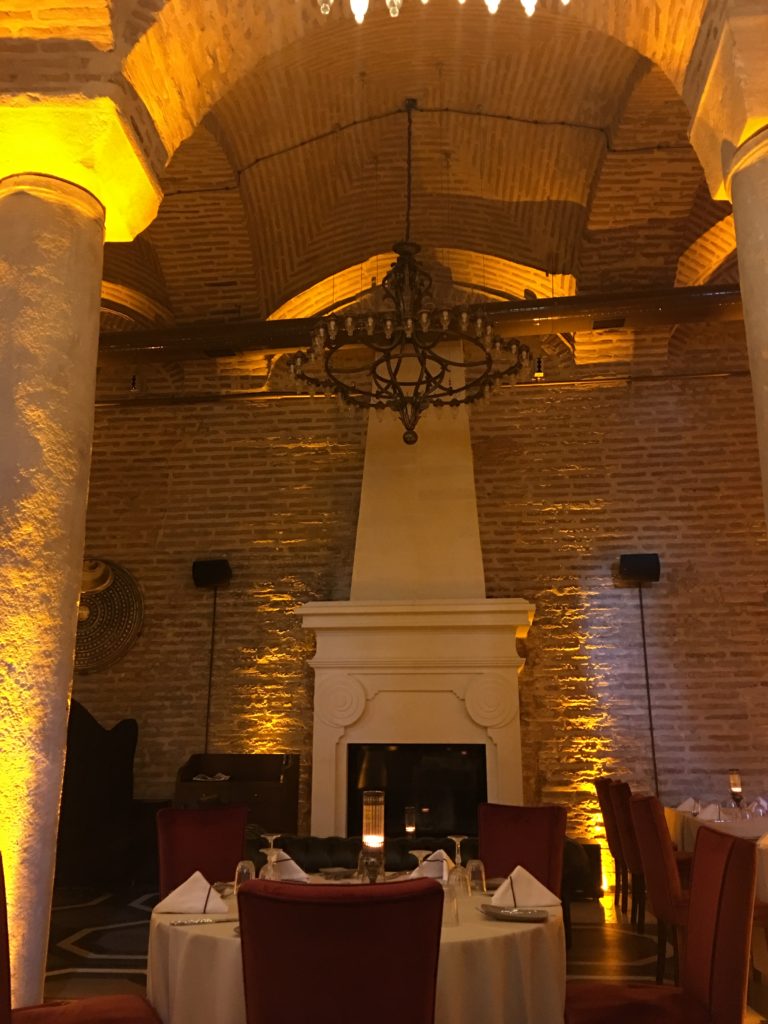
The name of this beautiful restaurant is Sarnıç, which means cistern in Turkish. It is one of the numerous cisterns under the historical peninsula. Being one of the major components of the water system of Istanbul, they were built thousands of years ago. For a more detailed account of the major cisterns of Old Istanbul, you can access one of my previous posts, Historical Cisterns of Istanbul, by clicking the link here.
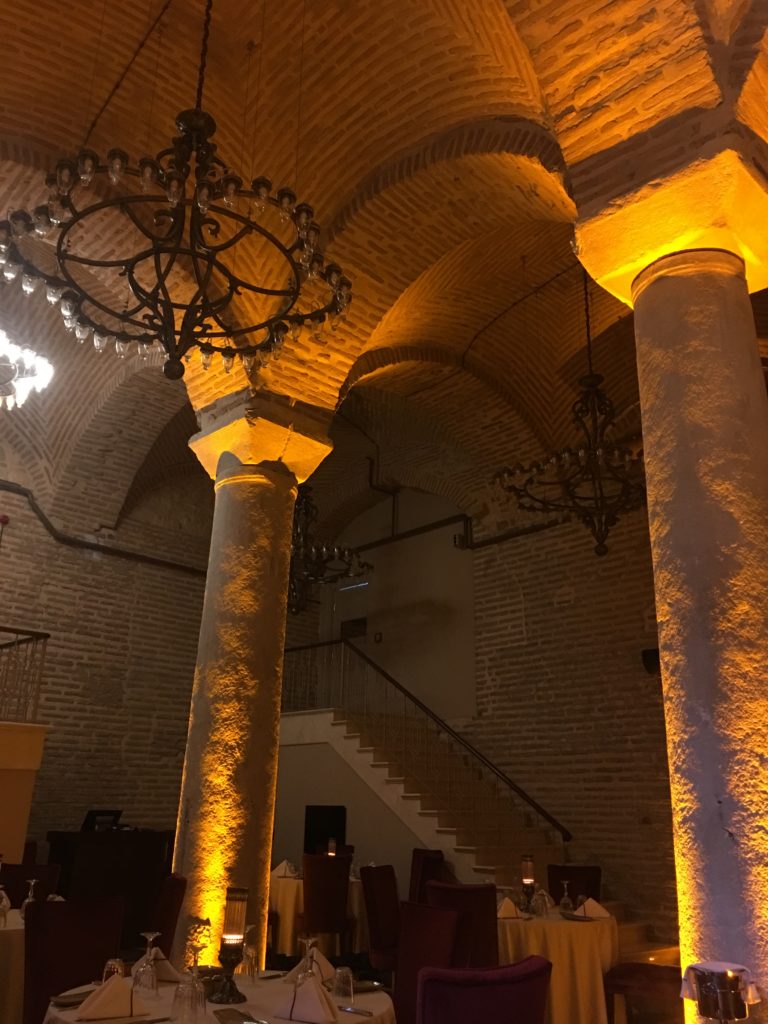
The cistern, which is even older than Hagia Sophia is a rectangular, 16.30 by 10.75 metres structure. There are six pillars in two rows that seem to have been brought here from other structures as none of them are identical. It was built in 542 A.D., during the reign of the East Roman Emperor Justinian I (527-565 A.D.). The intention was to supply water to the Great Palace and the buildings in the vicinity. It is 12 metres high in total out of which, 3 metres are above today’s ground level. The building was renovated again in 2019 before the reopening.
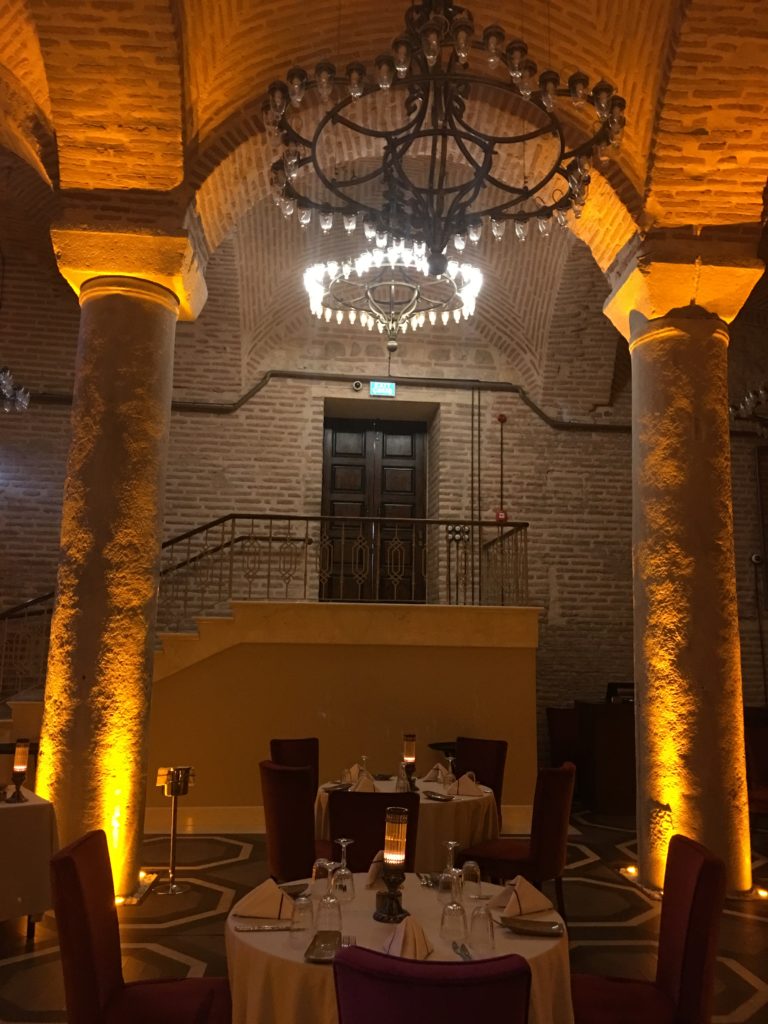
The atmosphere of the restaurant was so warm and inviting that, we decided to have lunch there. However, even though the service and the food was excellent, I believe it would be much better to go there for dinner. With the fireplace and the low lights, the structure promises to be warm and cosy in winter and cool in summer. Similar to the eating culture of the people of the Ottoman Empire, the menu is a mixture of Middle Eastern, Central Asian, Balkan, Mediterranean and European cuisine, enriched with flavours such as mastic (widely used in Anatolia in early Ottoman times), anise (used as an aphrodisiac in the Ottoman Imperial Palace), almond, walnut, saffron, cinnamon, coriander and zaatar.
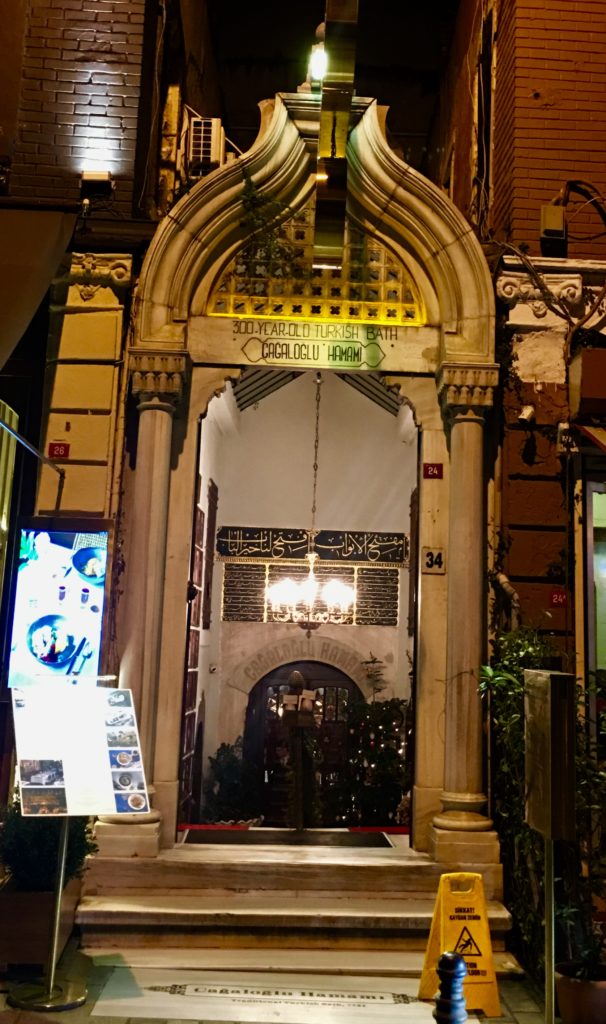
The second restaurant that I have recently been to in the area is 1741 Lokanta. This is a restaurant which is located inside the Cağaloğlu Hamamı (Cağaloğlu Turkish Bath). The interesting part is that, the bath is still in operation with separate sections for female and male customers. If you are interested, you can also spend some time at the bath, before having a late lunch (restaurant opens at 2 p.m.) or dinner.
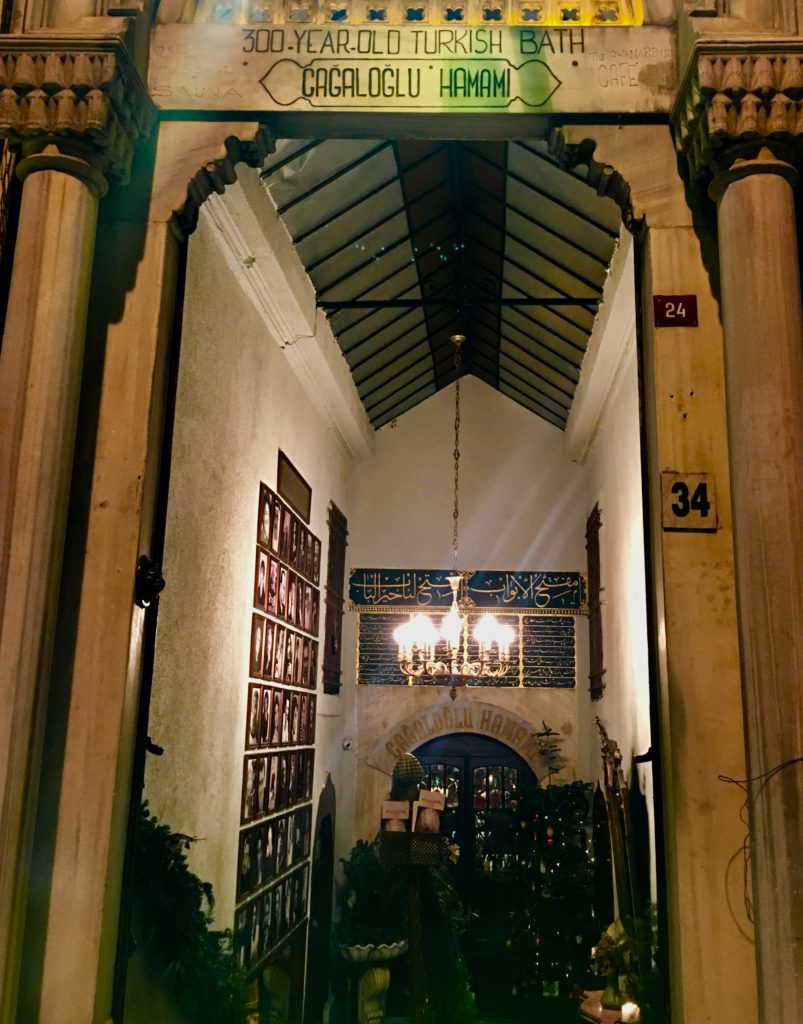
Public baths were initiated by the Romans, as it was the case throughout the Roman Empire. The tradition continued in these lands with the Eastern Romans and the Turks readily acquired the habit of going to public baths when they conquered and settled down here. So much that, the baths became known worldwide as Turkish Baths from then on. Going to the baths was a very important social occasion in Ottoman times and it still is in rural parts of Turkey. Men discussed their most important business there. For women, it was an even greater social event. Women would go to the baths on set dates with their relatives and friends, to spend the whole day. Special dishes and desserts would be prepared to be eaten while cooling off and relaxing in the hall, after hours in the bath. This would also be the ideal place for prospective mothers-in-law to look for their future daughters-in-law. Where could be a better place to see the bodily faults a young girl than the baths?
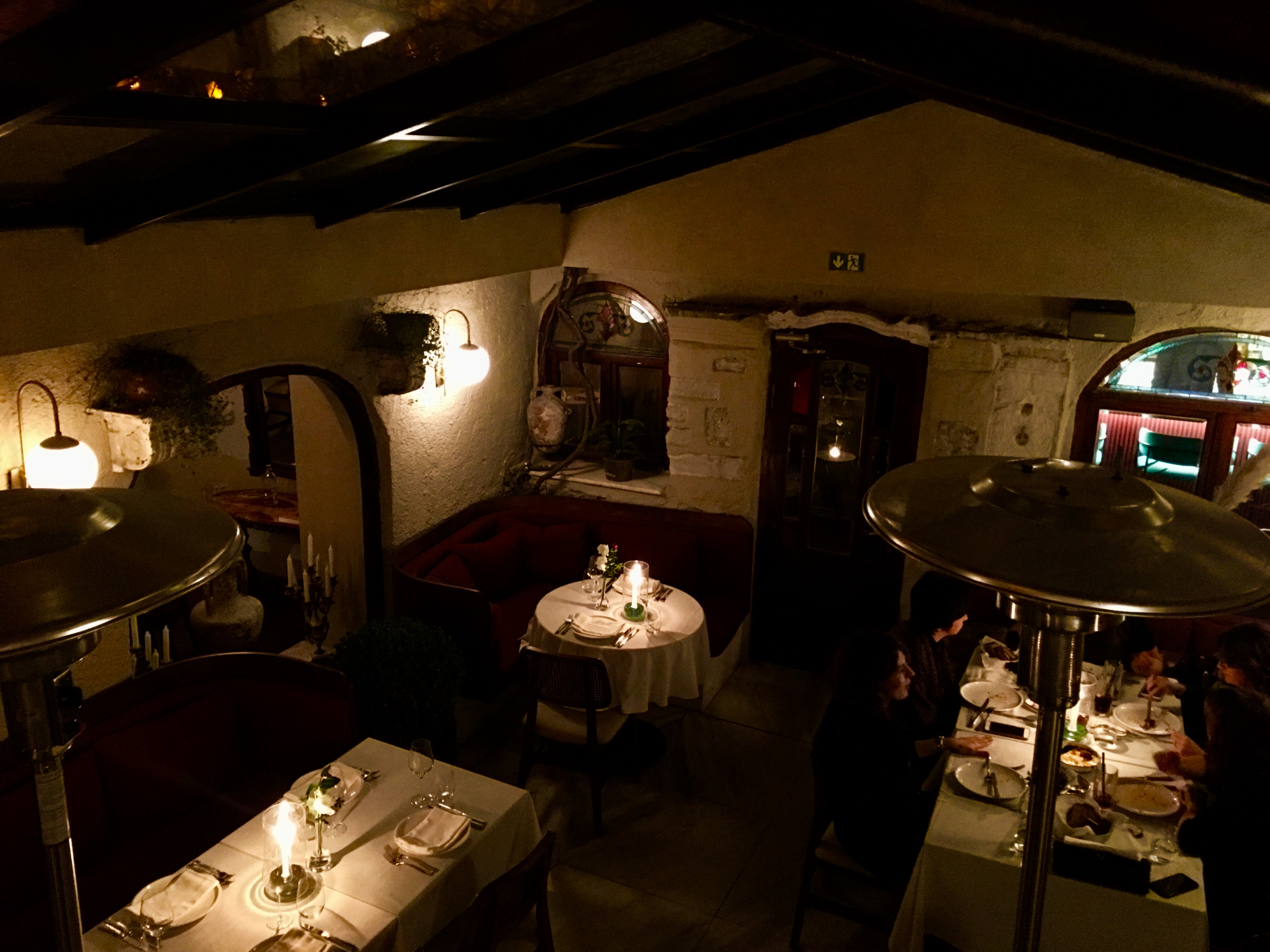
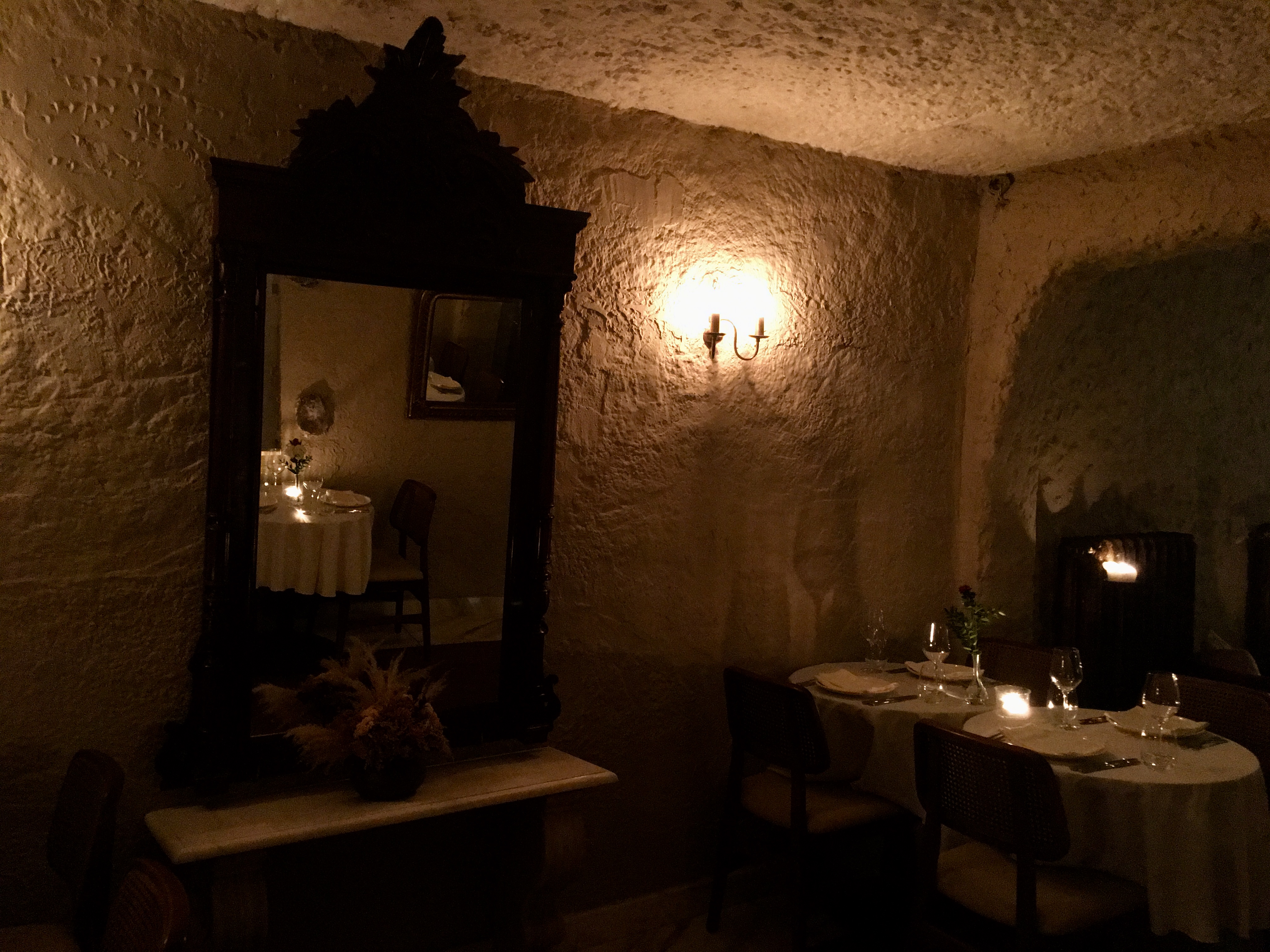
The Cağaloğlu Bath was built in 1741 by Sultan Mahmut I (1730-1754), to provide income for the library that was on the premises of Hagia Sophia. Interestingly, it was also the last bath (hamam) that was built in Istanbul. In the following years, it was prohibited by the Sultans of the time to build baths due to shortages of wood and water in the city. The rule was so strict that, illegally built ones were immediately demolished and those in need of repair were left to perish.
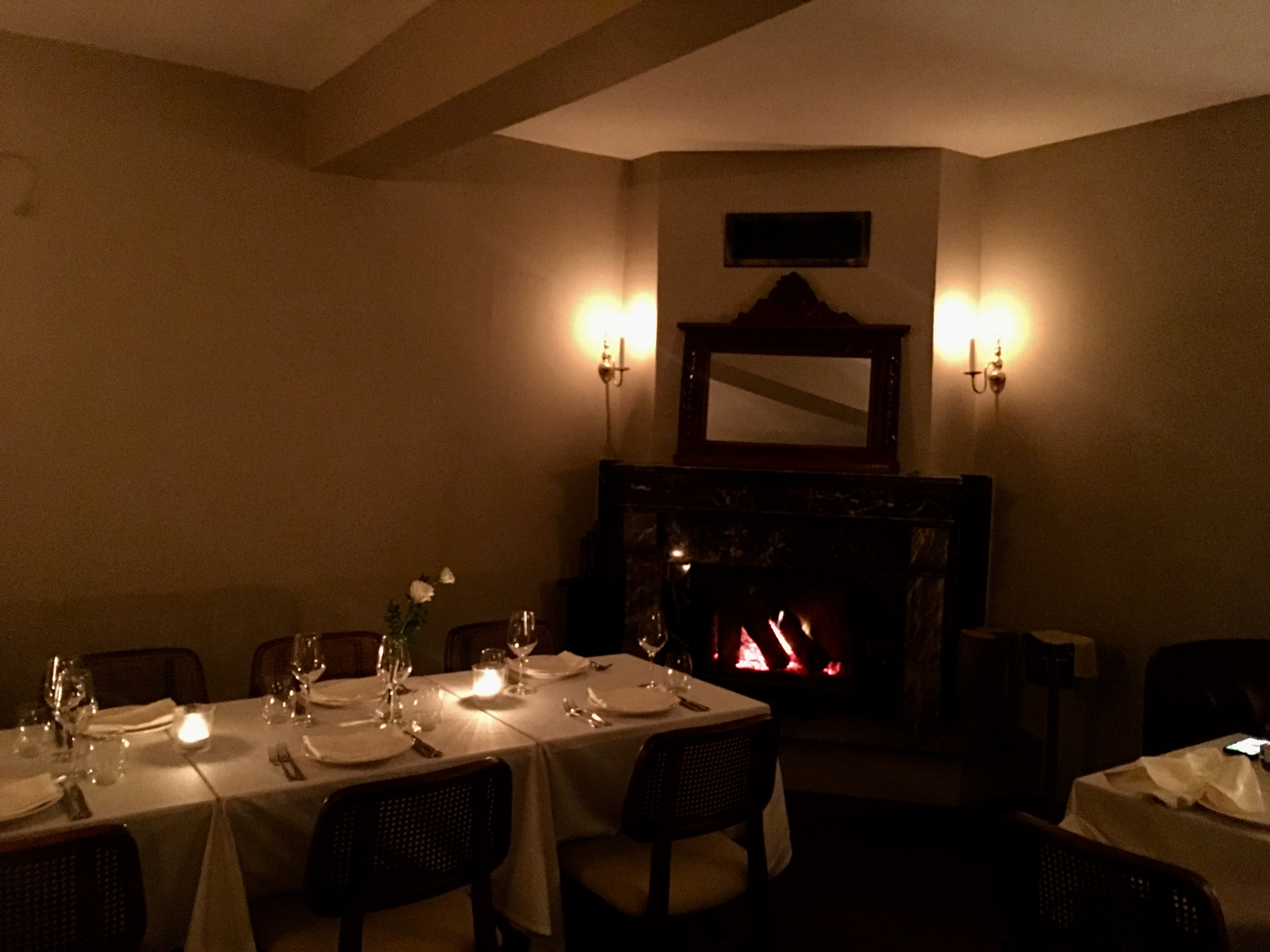
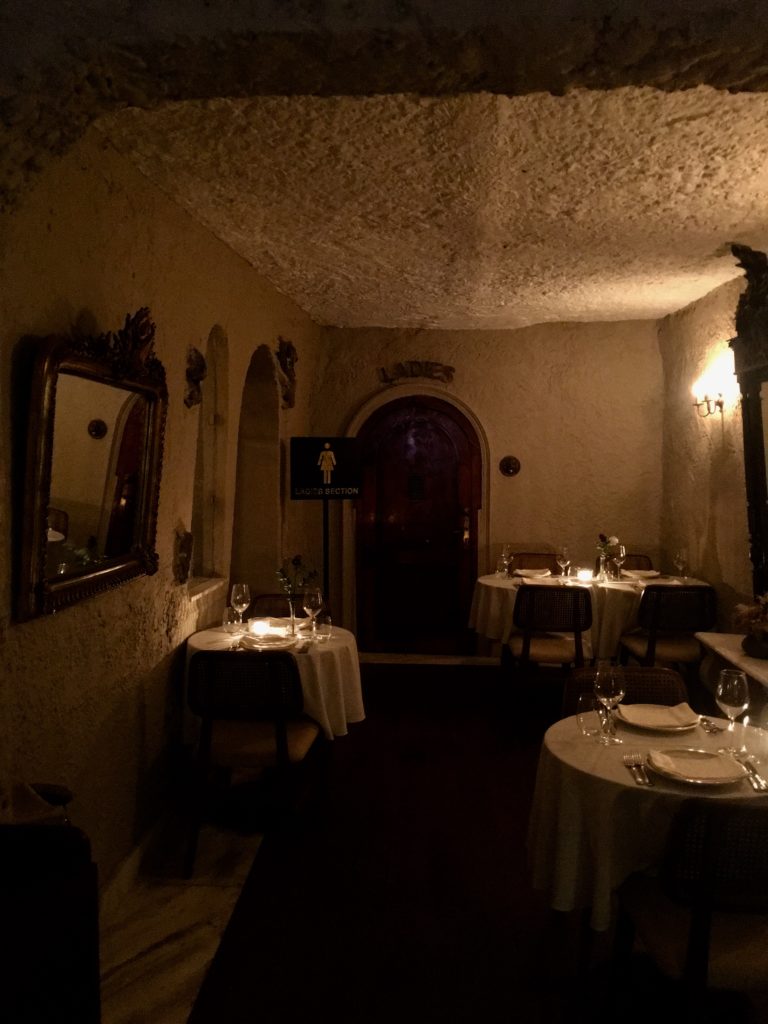
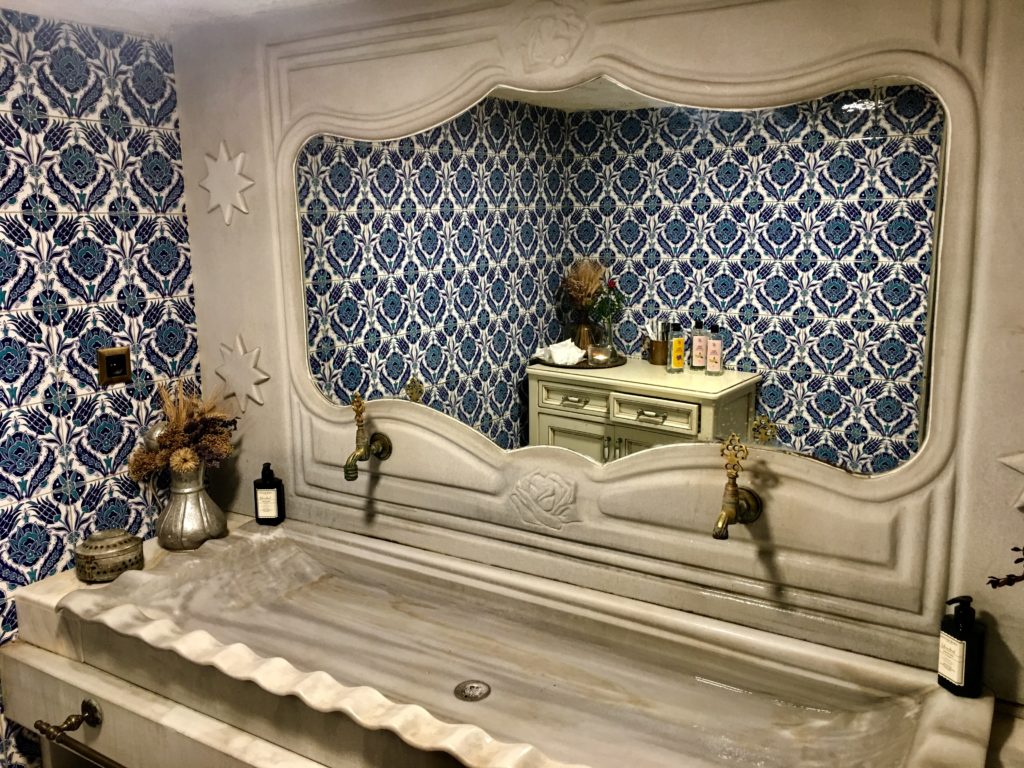
The Cağaloğlu Bath takes its name from the district Cağaloğlu, which is not far from the Hagia Sophia Museum. The name comes from the Italian Count Cicala (1544-1606), who converted to Islam and acquired the name Cigalazade Sinan Pasha. He eventually became vizier in the Ottoman Imperial court and had a big mansion built in this district. In time, the district came to be known as Cağaloğlu, derived from the name Cigalazade over time. Some sources state that, it was in fact Sinan Pasha who had a Turkish Bath built in the district and that it was later reconstructed, in 1741, as the Cağaloğlu Bath.
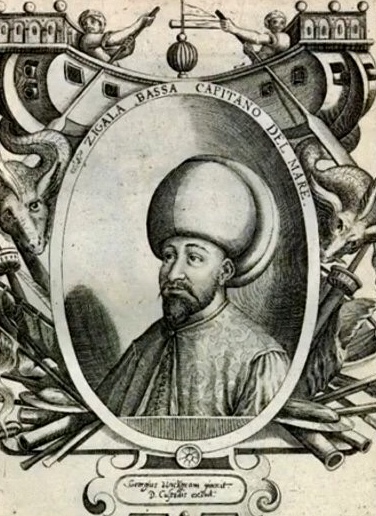
The bath takes pride in having hosted a great many number of famous guests who have visited Istanbul over time. Here are a few of those that catch the eye among the displayed photographs: Mustafa Kemal Atatürk, King Edward VIII, Kaiser Wilhelm II, Florence Nightingale, Omar Sharif, Tony Curtis, Harrison Ford, Oprah, Rudolf Nureyev, Kate Moss, John Travolta, Cameron Diaz.
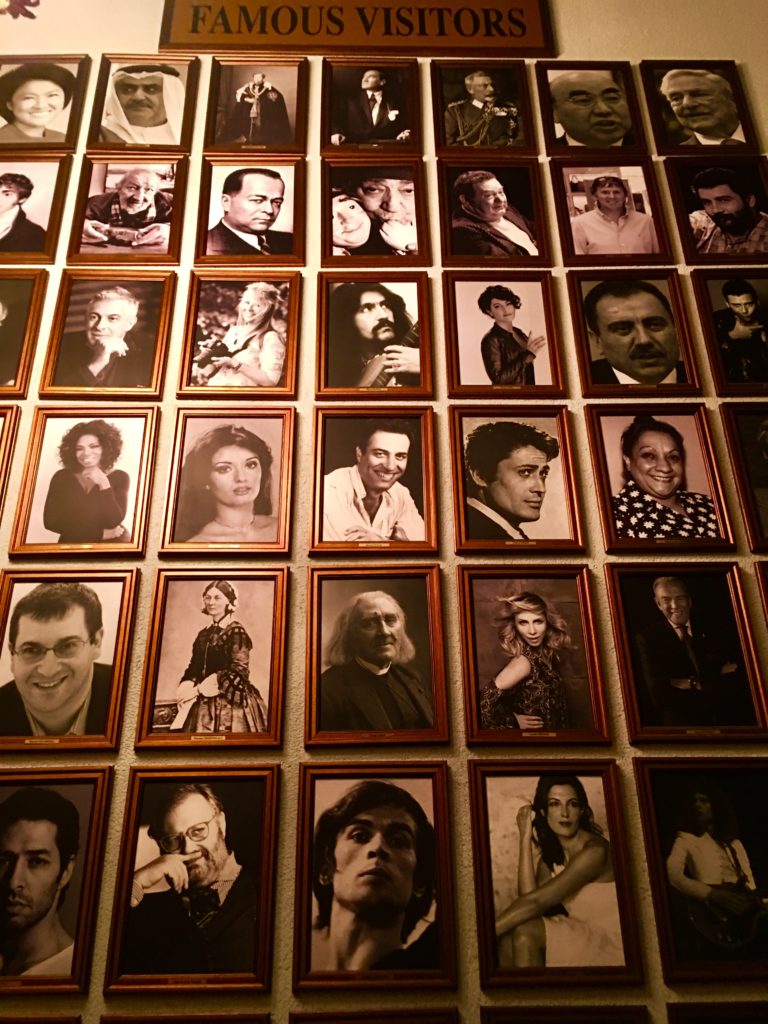
Walking in through the main entrance, you come across a reception desk that is for the men’s section of the bath. Women’s section is accessed via another entrance in a side street. Behind the desk you will see a big fountain in the middle, surrounded by couches. The cubicles that surround this square area are for getting undressed. Traditionally this area is for relaxation and refreshment after taking a bath but before getting dressed. As the bath is currently operating, when you first enter, it is a little bit awkward to see men wrapped in cloths called peştemal, relaxing and drinking tea or special home-made sherbets. The door to the restaurant 1741 Lokanta is on your right.
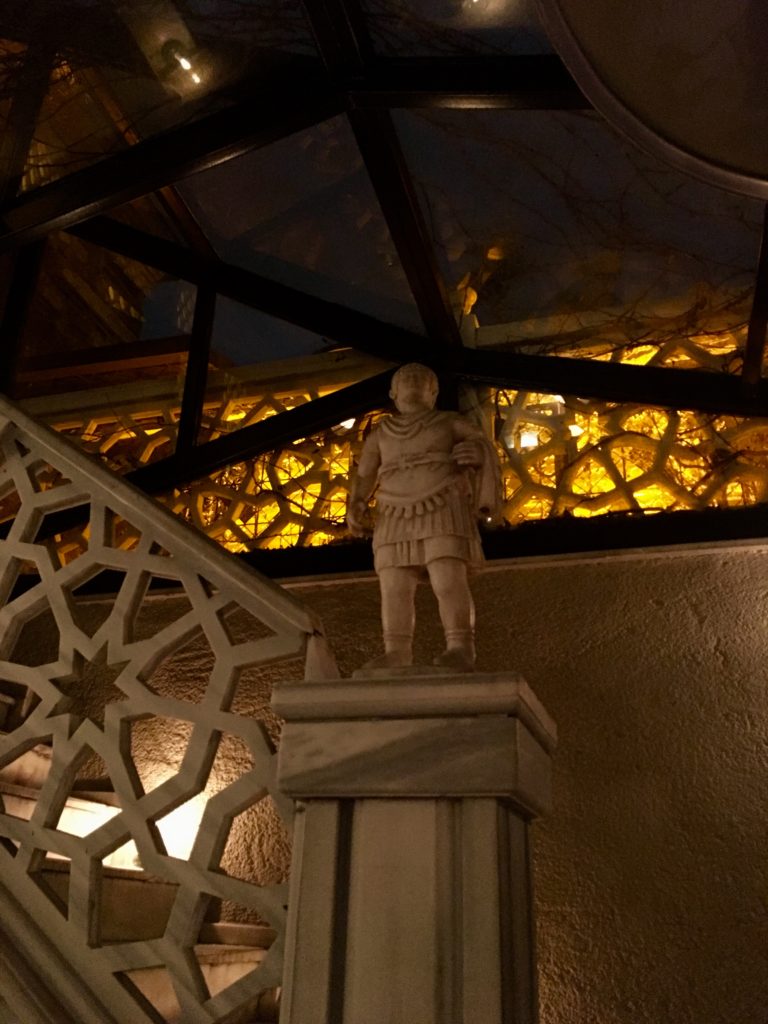
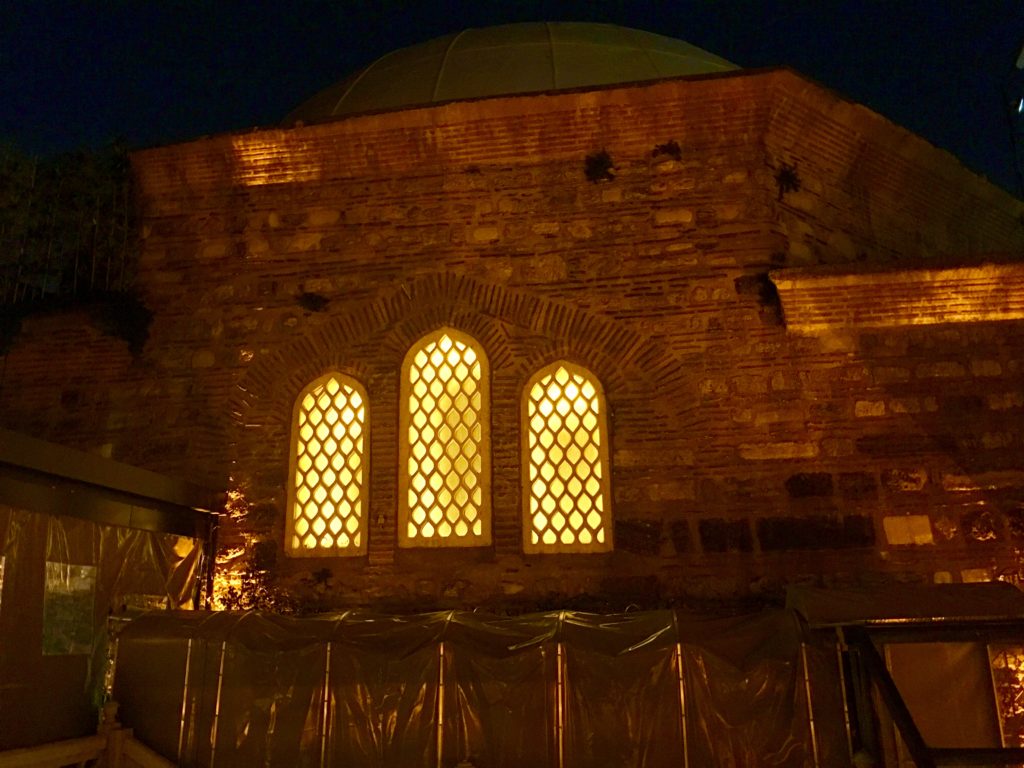
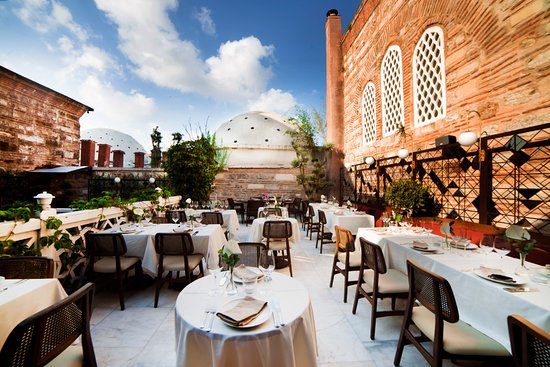
Source:www.lokanta1741.com
1741 Lokanta is in the area that architecturally joins the men’s and the women’s sections of the bath. It also includes a terrace with a marble bar that must definitely be pleasant in the summer, even though it is secluded and without any view. I stepped out to the terrace. It was deserted due to the cool weather but, I thought the atmosphere, with the low lights and the two surrounding historical buildings, was very nice.
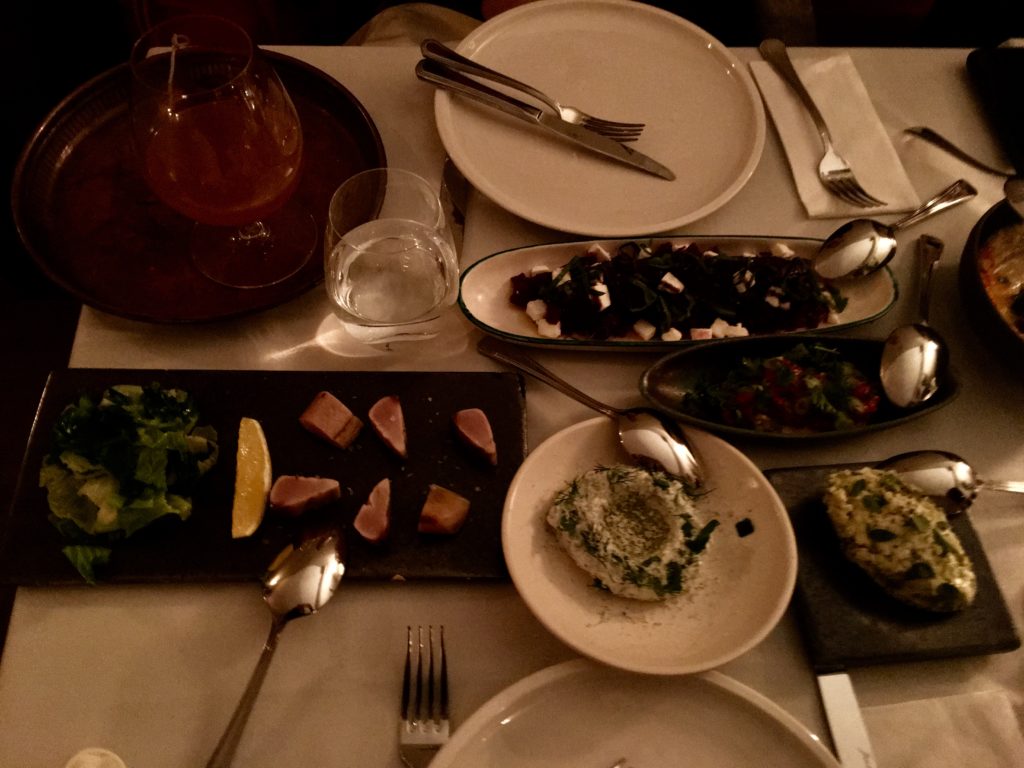
The restaurant was full with both foreigners and local people some of which seemed to be regular patrons. The offered menu consisted of a range of traditional Turkish dishes to more recent experiments with the local cuisine. Some of their specialties are mussels in vine, grilled octopus and Tirit Kebab. You can also take a Tasting Menu for two, to taste all the mezze and the main dishes. I personally found this tasting menu overwhelmingly expensive and too much in quantity. The amount of food you are served could practically be for four people. If I go there again, I would rather go for a selection of starters and a main course, followed by one of the desserts. The traditional baked rice pudding would be a good choice. This is a very common dessert in Turkish households, especially for babies and young children. The restaurant added a touch to the traditional recipe with a hint of lavender. If you do not fancy lunch or dinner, you can go to 1741 Lokanta, after a long and hot summer day spent around the Sultanahmet Square, to enjoy one of their special cocktails at the bar on the terrace.
Addresses:
- Sarnıç Restaurant: Soğukçeşme Sok. No:26 Fatih/ Istanbul
- 1741 Lokanta (Cağaloğlu Hamamı): Profesör Kazım İsmail Gürkan Cad. No: 34 Fatih/ Istanbul
